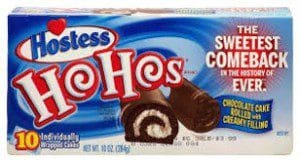Hostess Brands – the snack food company that makes Twinkies and Ho Hos – announced on Tuesday that they had agreed to sell a majority stake in the company to a publicly traded affiliate of the Gores Group, an investment firm.

This is quite a turnaround. In November of 2012, Hostess ceased doing business based on their bankruptcy. But fans of Hostess know that there was a second act to the story. This happened after the brands and certain factories were purchased out of bankruptcy in April of 2013. Now it is reported that the companies that purchased Hostess Brands stand to collect a return of about $1 billion on an initial equity investment of about $185 million.
This turnaround was, in large part, driven by a supply chain transformation that greatly lowered Hostess’s costs of doing business. In the fresh bakery segment the fulfillment model is based on direct store deliveries (DSD). The way this works is that merchandizers go into the stores, look at the inventory levels on store shelves, and refill the shelves. This is an expensive fulfillment model that requires the manufacturer to use more labor – in the form of merchandisers – and own a significant number of assets. In the case of the former owner of the brands, it meant 8,000 route trucks and 600 depots. But for fast moving, perishable items it was believed that this was the only practical way to keep fresh product on the shelf.
In contrast, in most grocery product segments a warehouse direct model is in place. The retailer orders goods, often in full truckload quantities, that are delivered to the retailer’s distribution centers (DCs). When Hostess Brands, LLC started up, the company decided the expensive DSD model would not work. They needed to get their costs down. They made a heretical choice, they would be the first in their segment to use a warehouse direct fulfillment model in order to drive a significantly less expensive supply chain while providing best-in-class service to its valuable customers.
Retailers that wanted to do business with Hostess would now have to forecast demand, order goods, receive goods at their DCs, ship goods from their DCs to their stores, and stock the shelves themselves.
One might think the retailers would balk at this. They did not. The coverage of the death of the Hostess brand, and the social media firestorm that erupted, had made it obvious that Hostess was a powerful brand. Once the company was ready to relaunch the Hostess brand, retailers were clamoring for their goods.
Quickly launching an asset light supply chain required the use of outsourcing partners. One key partner was LeanLogistics; LeanLogistics plans and executes Hostess’s transportation moves. An article we published in January has much greater detail on the Hostess supply chain transformation. But the take away is that clearly that transformation was successful, Tuesday’s news proves it. And as a supply chain guy, I just love hearing about a business turn around that was largely driven by a more effective supply chain.
















